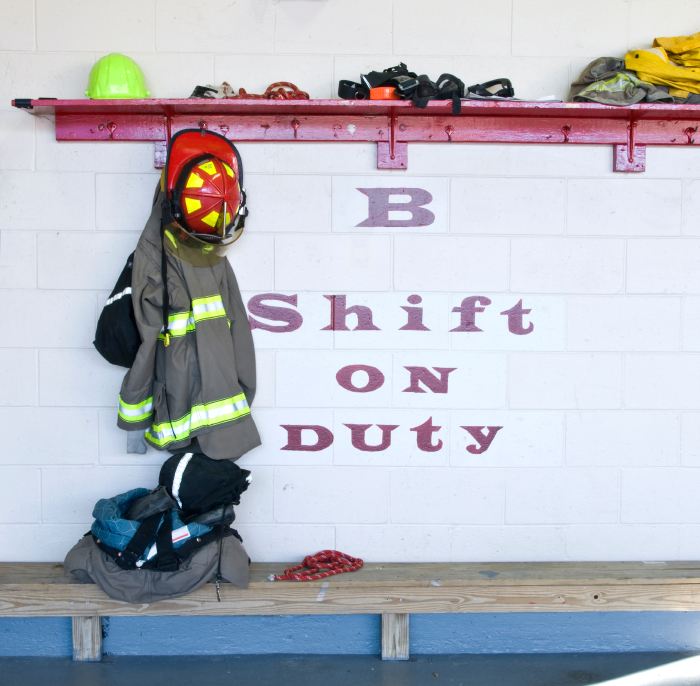 I am constantly asked this question; “Chief, How do I present myself?” Well, this is a loaded question. In response I ask, where, when and for what purpose? What follows is… “for the oral interview of course!” The reason this is a loaded question is because there are many times in the firefighter hiring process you will have to present yourself to the people around you.
I am constantly asked this question; “Chief, How do I present myself?” Well, this is a loaded question. In response I ask, where, when and for what purpose? What follows is… “for the oral interview of course!” The reason this is a loaded question is because there are many times in the firefighter hiring process you will have to present yourself to the people around you.
Let me start of by saying, regardless of who, what, where, when or why you are presenting yourself you should do so with honor, dignity, integrity, respect and of course sincerity.
Before we go any further though let’s get one thing clear. You are being watched from the minute you walk out your door. When I say “your door” I mean the door to your home literally. Remember, your home should be your sanctuary. It is where you will learn and practice getting better. When you step out your door you must always consider somewhere, somehow, someway, someone is always watching me. You will not always know it, it will not always be at a time you are your best, but rest assured, they are watching. As a result of constantly being under the microscope you will need to develop maturity and integrity.
You can demonstrate maturity by being calm, cool and collected when dealing with people and circumstances. Integrity can be demonstrated by doing your job and doing what is right, Always! Now that we have set the groundwork let’s discuss how YOU should actually present YOU. To completely cover this idea we must define what is involved in the process of presenting oneself. The following are the questions you will need to develop answers to. We will help you here, however it is still up to you to execute the actions.
How I should look (grooming)?
Since we serve the general public they have a certain expectation of us. What I am about to mention may cause some controversy but you should remember, YOU are applying for the job. We already have a job and we had to conform to these standards too. Not to mention, some departments have strict policies and do not waiver. So here a few points to remember:
– Tattoos, Branding, Scarring or other forms of body art should not be visible. In an article in the September 2008 issue of FireRescue Magazine Jane Jerrard noted, “In the Spring of 2008 the Los Angeles Fire Department (LAFD)introduced a controversial policy on tattoos that calls for a complete cover-up. Controversial? Yes, but its their rule.”
– Men should refrain from body piercings. Certainly we are not trying to take away individuality, however, you are applying for a job that requires you to comply with a certain standard. Why would you want to start out challenging the policy? Save it for after probation.
– Fingernails should be of normal length.
– No Facial Hair. Do yourself a favor and be clean-shaven. If you have facial hair it may be ok to you, but may be a distraction to the panel. Why risk it?
– Hair should be neat, clean and conservatively groomed. For men not touching the collar. For Women, consider that as a firefighter if you have long hair it will need to be put up so as to not interfere with you personal protective equipment. What we are saying here is start acting like a firefighter and dressing like one. It can’t hurt and may even help. Also, refrain from dying your hair anything but a natural tone.
– Take a shower.
What clothes should I wear?
There is an old saying “It’s not the clothes that make the person, it’s the person that makes the clothes.” The meaning is very simple. It’s you that is the focus of the interview not your clothes and you will not be defined by what you wear. You should however, make sure that your choice of clothes is appropriate. For men, you should wear a professionally tailored suit and tie that is a dark color with a white shirt. Do not wear anything shiny or something you would wear out with friends on a Friday night. Keep it conservative. For Women, a conservative business suit will do nicely. You are interviewing for a professional career. You should take pride in how you dress. Now don’t go running out and buy a $1000 suit. That’s overkill. Your attire should be nice enough that it does not draw attention to you as a slob but not so nice that you out dress the panel. The key is to wear something that represents you well but does not draw attention away from the interview.
How should I shake hands and greet people so I will have the best impact on my career?
This is a crucial skill to master. This will, most likely, be your first physical encounter with the panel. The ability to give a good handshake and introduce yourself properly will set the stage for the rest of the interview. Nancy R. Mitchell, The Etiquette Advocate says “in order to give a good handshake begin with your hand parallel to the floor with your thumb pointing to the ceiling, place your hand all the way into your partner’s hand until the space between thumbs and index fingers touch. Wrap your thumb and fingers all the way around your partner’s hand and squeeze assertively–not painfully–and shake 3-4 times. Always stand for a handshake. The space between partners is approximately 2 feet. Maintain an open posture when shaking hands, smile, make eye contact, and say your first and last name. When meeting someone for the first time, always try to say their name as you shake hands and use their rank or title (Mr. Ms., Mrs., Captain, Engineer, Chief etc.) and their last name.” If you do this with genuine sincerity you will set the stage for a positive interview.
How should I speak?
It is imperative that you communicate with a tone of voice that is confident but not conceited, self-assured but not tentative. It is appropriate to regulate the tonality and volume of your voice to emphasize certain points but make sure you don’t yell or whisper. Communication is not just what you say but how you say it. Research has shown that communication can be represented by numbers. These numbers represent the percentages of importance that the varying communication channels have with the belief that 55% of communication is body language, 38% is the tone of voice, and 7% is the actual words spoken. This came from two research studies, Mehrabian & Wiener, 1967 and Mehrabian & Ferris, 1967. If you can master the answers to these questions and understand that, How YOU present YOU is about the entirety of the process, you will make a good first impression. As the saying goes, “You never get a second chance to make a first impression.” According to Carol Kinsy Goman in an article she wrote for Forbes Magazine “You’ve got just seven seconds – but if you handle it well, seven seconds are all you need!” Finally, first impressions are made are made quickly and can determine the whole course of the interaction you are about to be involved in. It is critical to make that good first impression. People’s eyes are like video cameras. They are recording everything you do and say. What kind of recording are you leaving the panel with?



